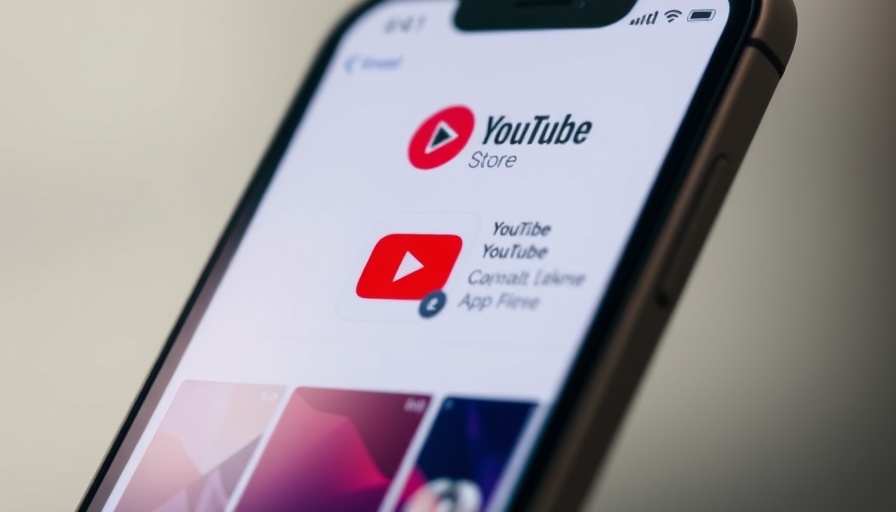
The Evolution of Monoculture in the Digital Age
Online monoculture—the idea of a dominant, universally accepted culture creating a single narrative—has been a growing concern in the digital age. Traditionally, platforms like YouTube allowed a few creators to dominate the landscape, leading to a shared but limited cultural experience. This phenomenon raised questions about diversity, representation, and the true nature of community in online spaces. With YouTube's latest update, we see signs that this monoculture may finally be dismantled, fostering a more diverse and inclusive environment.
YouTube’s Innovative Algorithm: A Game Changer
YouTube’s recent algorithm update enhances user experience by prioritizing niche content tailored to individual preferences rather than merely trending videos. As Carlos Maher, a digital content analyst, notes, "The update reflects a shift towards personalization in content recommendation, ensuring that even smaller creators gain visibility.” This encourages a broader array of voices and experiences, allowing users to discover creators who resonate with their unique interests.
The Impact of Community on Content Development
With an increase in diverse content, the way communities interact on YouTube is evolving. Gone are the days when singular trends dictated what content would go viral. Instead, niche communities are thriving, providing their members with a sense of belonging that transcends the previous one-size-fits-all approach. For instance, channels focusing on specific hobbies, like sustainable gardening or retro gaming, are gaining traction through dedicated audiences. These communities not only foster engagement but also encourage creators to explore innovative content that speaks directly to their followers.
Why This Shift Matters: Understanding Cultural Dynamics
The dismantling of online monoculture matters more than mere diversity in content creation. It reflects a broader cultural movement that emphasizes individual narratives over collective conformity. Professor Leah Thompson, a media studies expert, explains, “When diverse voices are amplified, we gain richer, more representative media landscapes, essential for a well-rounded societal conversation.” As creators reach audiences in new ways, meaningful dialogues can flourish, facilitating discussions on pressing topics like sustainability and mental health.
Predicting the Future: Trends That May Emerge
As YouTube continues to innovate, experts predict that emerging trends will define the online landscape even further. For example, platforms may evolve to emphasize collaboration among creators from diverse backgrounds. Additionally, the rise of augmented reality (AR) and virtual reality (VR) in digital content could revolutionize how users experience media, offering even more immersive interactions. Dan Malik, a tech futurist, asserts, “The future lies in blending community interaction with cutting-edge technologies, creating environments where users feel empowered and connected.”
Counterarguments: Addressing Criticism
Despite the advancements, some critics argue that algorithms still favor certain creators based on existing performance metrics, thus perpetuating a form of monoculture. They suggest that without intervention, these platforms can inadvertently suppress newer voices. Addressing this concern, digital ethics advocate Maya Rinsler warns, “Users must remain vigilant and demand transparency in how platforms curate content. Only then can we foster true diversity.”
Conclusion: Embracing a Cultural Mosaic
The transformation of YouTube’s ecosystem signals a promising shift towards a cultural mosaic that embraces diversity and individuality. As users engage with a broader spectrum of content, they can shape their experiences and forge connections rooted in shared interests and interactions. To truly support this change, it is vital for audiences to actively seek out and uplift lesser-known creators, ensuring that the digital landscape remains diverse and representative of the world we live in.
Let’s cultivate our curiosity and openness to new voices within the digital community. By actively engaging with and supporting a variety of creators, we can all contribute to a richer, more vibrant online culture.
 Add Row
Add Row  Add
Add 




Write A Comment